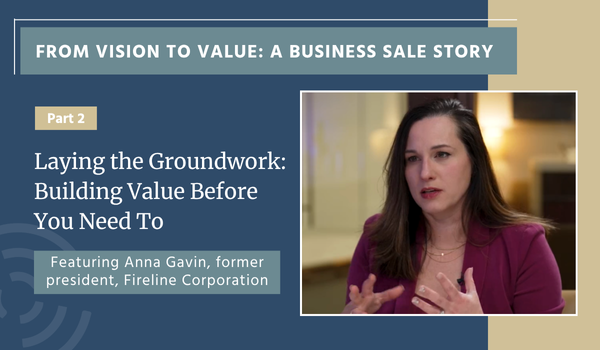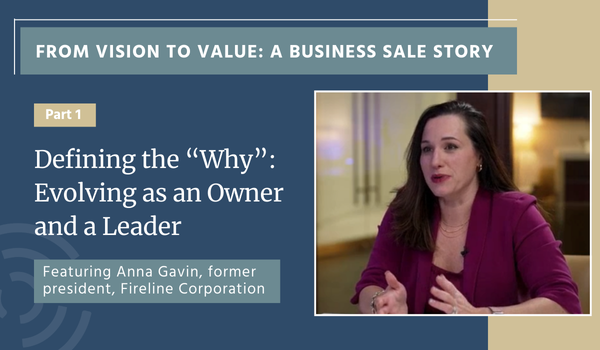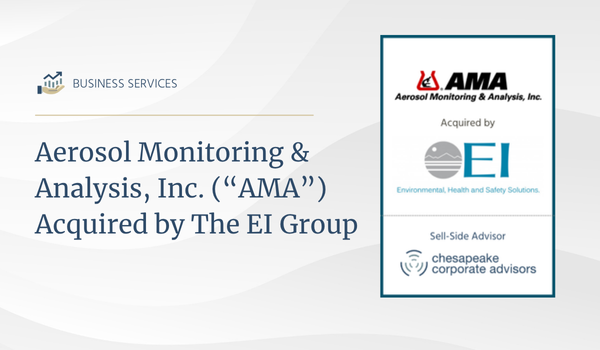A methodical approach to selling your business is the only way to keep both the seller and the potential buyers moving on the same track, at the same pace. Such an approach is also the best way to maximize the value of your business, secure the best deal, and improve the odds of a successful closing.
The following 10 steps to selling a company can set your business on the path to success.
- Get your house in order. Long before it is time to sell, you should be working to make your business as attractive as possible. Effective ways to improve your business’s attractiveness to buyers include strengthening your sales pipeline, diversifying your customer base, accelerating your growth (which can result in a higher multiple), shoring up your technology (including cybersecurity), and improving your financial reporting capabilities. Keep in mind that there are no shortcuts to the process of getting your business in order. If you have not taken this step yet, you may want to partner with a specialist who can advise you on the advance work needed to prepare for a successful sale.
- Assemble the right team. Selling your business requires the expertise of specialists who know how to achieve a successful outcome. A proven best practice is to partner with an investment banking firm and M&A attorney that both have strong track records in negotiating and closing transactions. You may also need guidance from a different accounting firm than your business currently works with (specifically, a firm with experience in business sale transactions) as well as a financial advisor who specializes in estate planning, since your net worth will increase dramatically once you sell the business.
- Prepare yourself for the road ahead. As a team, your investment banking firm, M&A attorney, and accounting firm can advise you on what to expect along the journey of selling a company, which averages 6-9 months and involves many steps and decision points. While none of your team members will have a crystal ball that allows them to predict the future, these professionals can provide an early estimate of your business valuation. The estimated valuation that your team develops is a much more reliable indicator than setting your own expectations based on what another business just sold for, especially since every industry and every company is different. For example, a software-focused company with high margins and recurring revenue will likely command a higher valuation multiple than a construction firm with a lower margin profile and exclusively project-based work.
- Develop the documentation. At this point in the sale process, your investment banker will develop three types of documents simultaneously:
- Confidential Information Memorandum, which is the key document your investment banker will provide to buyers in the initial stages of the process.
- Financial & Diligence Documents, which are the primary materials interested buyers will review. Examples include historical financials, customer information, sales pipeline, organizational chart, vendor contracts, IT infrastructure details, and other data.
- Buyer List, which typically includes a mix of private equity firms and strategic buyers. Selection of strategic buyers to include on the list is based on criteria such as industry, product/service lines, geography, size, and financial resources.
- Go to market. Once your investment banker has prepared the necessary documentation, it is time for the firm to present your company to potential buyers. An initial group of interested parties will view the Confidential Information Memorandum and select documents after signing a non-disclosure agreement (NDA). At this point in the process, a call for initial offers goes out to any potential buyers still interested in your company. The first-round bids you receive will vary in terms of how much the buyer is willing to pay, which is often expressed as a range, along with the proposed deal structure (for example: all cash, both cash and stock, or an earn-out period).
- Meet with “finalists.” After reviewing initial offers, you and your investment banker will decide which buyers are still in the running. Typically, you will arrange a half-day meeting with each finalist to talk business, followed by a dinner to become more acquainted informally. As the business owner, you will want to include other executive team members from your company—such as the CFO, COO, or division presidents—and the buyer will likely bring along similar staff.
- Solicit Letters of Intent. After meeting with the buyers that you consider to be finalists, you are now ready to entertain formal offers. While each buyer’s initial bid was a starting point, the Letter of Intent (LOI) outlines the specific dollar amount and details of the deal structure, any contingencies and indemnities, and the proposed due diligence period. The LOI may also state whether the buyer intends to keep the owner and senior management on as employees after the company is purchased, as well as the length of employment and level of compensation.
- Negotiate the best deal. Your investment banker will negotiate with each potential buyer, leveraging the LOIs off each other, with a goal of arriving at the best sale price and terms. Ultimately your investment banker will help agree to a single buyer that will proceed to an exclusive due diligence process.
- Work through the due diligence period. Once you have identified a single buyer with whom to proceed, that buyer will conduct its final due diligence, which includes confirming the financials and ensuring there are no issues such as pending litigation, regulatory investigations, real estate-related problems, or cybersecurity breaches, for example. Once the buyer is comfortable moving forward, the due diligence activities shift to developing formal acquisition agreements. The development of formal agreements is typically the most time-intensive period for you as the seller, as you are working on getting the deal closed while still managing the business day-to-day. During this period your investment banker also can advise you on planning for the transition, which includes critical steps such as meeting with your employees about the acquisition and thinking through post-closing activities.
- Close the deal. To bring the process of selling your business to closure, you and your team will review the purchase agreement and any disclosures, in which you divulge actions you think could result in a claim later, such as a terminated employee deciding to file a lawsuit. If the final documents meet the approval of the buyer, the seller, and their respective teams, then the deal is signed and a wire transfer is initiated to disburse the funds. You have successfully sold your business!
Chesapeake Corporate Advisors recognizes that selling your company is one of the most important life decisions you will make as a business owner. Our firm has helped countless business owners across a variety of industries obtain the best possible sale terms. If you are considering selling your business, contact us early on for guidance on how to prepare for a successful outcome.





